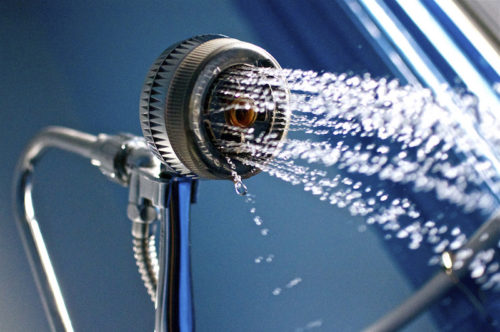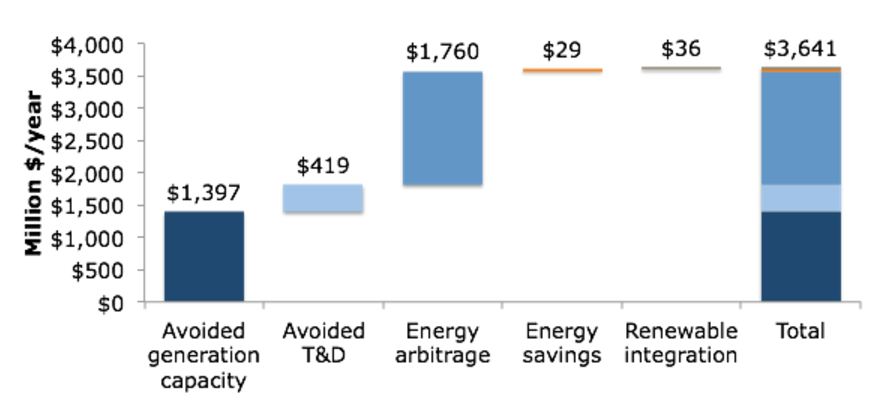
Water Heaters: As Sexy as a Tesla?
How grid-interactive water heaters are joining the battery revolution
This article was written by Margaret McCall, a former Senior Associate at RMI.
Of all the new tech emerging on the energy landscape, water heaters seem an unlikely contender. Alongside battery players like Tesla, with its Model X and Powerwall, water heaters look like even more of a stretch. However, the growing industry consensus is that grid-interactive water heaters have serious potential. They just might be the unexpected battery in your basement.
WHY THE BUZZ ABOUT WATER HEATERS?
Water heaters and batteries have one fundamental feature in common: they both store energy, batteries as charge and water heaters as heat. This ability to store energy gives water heaters flexibility. For example, they can be heated at night when power is cheap without jeopardizing your ability to take a hot shower in the morning.
Grid-interactive water heaters (GIWH) are electric water heaters that the grid operator or the local utility can control in real time (or the customer, automated software, or a third party could control them in response to granular retail price signals from the utility). This controllability makes a GIWH valuable for more than just hot showers. For example, in addition to heating water when power is cheap, it can also shut down during yearly system peaks, help integrate renewables, and provide services to the electric grid like frequency regulation. Optimizing water heaters like this can significantly reduce carbon emissions and, as explained below, create billions of dollars in value.
Better yet, this functionality is not dependent on future technology: any electric water heater with a tank—be it old-school electric resistance or newfangled heat pump—can become grid-interactive. Making modifications to an existing water heater to install a grid-connected communications device takes a couple of hours and could cost a few hundred dollars. However, building in grid-interactive capabilities at the factory only costs a few dollars and provides much more value to the grid and to the customer.
A HIGH-VALUE SOURCE OF DEMAND FLEXIBILITY
In our 2015 report, The Economics of Demand Flexibility, RMI analyzed the potential of flexible loads to provide significant economic value to the grid, finding at least $13 billion per year from common residential loads like water heaters and air conditioners. We found that water heaters, especially, have the potential to be an easily-tapped and high-value source of this flexibility.
A new study by the Brattle Group provides an in-depth exploration of the economic benefits of GIWHs. The fact that the study was jointly commissioned by utilities, environmental advocates, and industry groups highlights the diversity of groups interested in the potential of GIWHs. Brattle analyzed the potential of multiple scenarios, calculating that up to $200 in net system benefits may be realized annually for every GIWH participant. Ultimately, the authors concluded that GIWHs are a resource with significant opportunity for reductions in both costs and emissions, and one whose operational viability is already being demonstrated in pilot projects around the country—an exciting endorsement for the mild-mannered water heater.

But are they valuable enough to reach their full potential? The answer seems to be yes: RMI calculates that, if America’s nearly 50 million residential electric water heaters went grid-interactive, the system benefits would reach $3.6 billion. This number comes from the following sources of value:
- Energy arbitrage: simply heating water when power is cheaper (at night rather than in late afternoon, for instance) provides major value. ($1.8B)
- Avoided generation: avoiding utility investments is a huge source of value. By ensuring that water heaters don’t draw power during times of peak electricity demand, utilities can avoid building extra generation resources. ($1.4B)
- Avoided transmission & distribution: for the same reason as above, not using power on peak avoids investment in expensive transmission & distribution system resources. ($400M)
- Renewable integration: water heaters charging up at night could use wind energy that would otherwise be curtailed, or daytime solar that would otherwise be exported for less-than-retail compensation in certain markets. ($36M)
- Smart energy savings: installing a grid-interactive device could also allow homeowners to program their water heater for “vacation mode,” which prevents energy waste through standby losses. ($29M)
This estimate may be conservative, since it doesn’t account for the value of providing ancillary services like frequency regulation with GIWHs; the market rules for aggregated resources like GIWHs to provide these services are still emerging. We estimate that segment of future value could be worth an additional $400–700 million/year.
SEEING GIWHS AT SCALE
Now is the time for GIWHs to go big. The technology is here, its capabilities are needed, and actors big and small are exploring different paths to market.
GIWH technology is proving itself. Certain GIWH capabilities have been used at full scale for many years: millions of water heaters are enrolled in peak-shaving programs through utilities like Portland General Electric. The new Brattle study notes that more up-and-coming technology, like that required for frequency regulation, has become commercially available over the past couple of years and has now been successfully tested in pilots in Minnesota, Hawaii, and the MISO and PJM markets.
With the technology proven, GIWHs are getting attention for their sheer usefulness in the evolving DER landscape: they can help resolve challenges associated with the increasing penetration of renewables. In places with increasing rooftop solar generation like Hawaii, GIWH can help address the “duck curve” by shifting load to coincide with peak solar generation, and provide flexible demand to help balance inflexible and variable supply as the sun sets each evening.
GIWH are also gaining momentum as various parties explore different paths to market. Utilities can continue to expand their demand-response programs as they’ve done for years, building the scale needed for manufacturer-installed GIWH technology. Meanwhile, other actors are pursuing new business models, ranging from the PowerShift Atlantic project’s GIWH leasing program to Steele-Waseca Cooperative bundling a water heater with solar PV. Emerging opportunities may expand the market potential for GIWH even further: both DRAM in California and DSPs under NY REV could facilitate the aggregation of this kind of behind-the-meter resource. The same coalition of utilities, environmental groups, and industry leaders that sponsored the recent Brattle Group study are putting forth GIWH as a source of “community storage.”
Finally, earlier this week, industry leaders gathered in Portland for the annual Hot Water Forum hosted by the American Council for an Energy Efficient Economy (ACEEE). There was palpable excitement about the scale of the market opportunity for GIWH, and many innovative ideas for how to capture it, including grid-enabling standardization through factory-installed communications ports, leasing models, and more.
EVERYBODY WINS WITH GRID-INTERACTIVITY
If grid-interactive water heaters take off, everybody wins. Utilities could shave valuable megawatts off their peak. Environmental groups could celebrate cutting carbon. And consumers, of course, could save money on their electric bill with a device they already own. The value is there. Now utilities, manufacturers, and third parties need to work together to make it easy to capture. Instead of being 50 million dusty relics, electric water heaters can play a real role in strengthening the grid if they realize their potential as batteries in the basement.
Photo courtesy of Tasayu Tasnaphun via Flickr, Creative Commons license (CC BY-NC-ND 2.0).